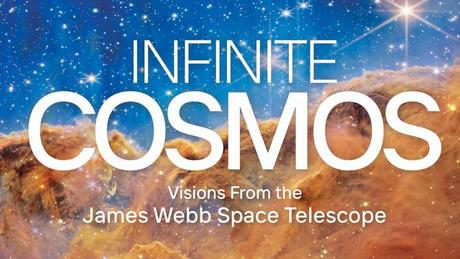
NASA's James Webb Space Telescope (JWST) has been an amazing piece of technology for advancing humanity's understanding of the universe, and is the source of awe-inspiring images of black holes, galaxies and nebulae. It has since been returned to scientists and astronomers. will be launched into orbit around the sun in 2022.
"Infinite Cosmos: Visions From the James Webb Space Telescope" is a 224-page hardcover published on October 8, 2024 by National Geographic, detailing the history of this remarkable $10 billion observatory platform, from concept to deployment, and the minds it inspired are revealed responsible for its engineering, construction, launch and inspiring operational record.
Written by astrophysicist and popular online science host Ethan Siegel ("Starts With a Bang") and including an extensive introduction by renowned science author Brian Greene ("The Elegant Universe," "Until the End of Time"), "Infinite Cosmos" reveals the countless ways the JWST has changed everyone's perception of the night sky with volumes of illuminating images straight from our mysterious skies.
Infinite Cosmos: Visions from the James Webb Space Telescope | was $50 now $40.56 at AmazonView offer
Here's the official synopsis:
"From the years of design and production, through launch and deployment, to the extraordinary images and new science they inform, 'Infinite Cosmos' showcases the revelations from the James Webb Space Telescope - the sharpest planetary vistas and deepest insights from the cosmos humanity has ever seen.
'Stars form in clouds of cosmic dust. Jupiter and its moons are sharper than we've ever seen them. Galaxies that are billions of years old. The first images from the James Webb Space Telescope (JWST) have electrified the world - and amazed experienced scientists with the wealth of information they reveal. In "Infinite Cosmos," National Geographic tells the twenty-year story of the telescope's development and the scientific achievements needed to put it into orbit around the sun, a million miles from Earth.
"Page after page, more than 100 spectacular photographs depict the cosmos as never seen before, from stardust coalescing in the Eagle Nebula's 'Pillars of Creation' to shimmering galaxies, newly discovered exoplanets, fields of stars in deep space and the planets of our planet. solar system in vivid detail. This is the definitive printed account of these historic astronomical achievements and is a book that inspires awe and admiration, perfect for space and space enthusiasts, libraries and anyone who gazes in wonder at the starry sky. "
Siegel is well known in the scientific community and with this new JWST book he wanted to provide a more optimistic, alternative narrative to recent documentaries that have negatively focused on the project's backstory, setbacks and problems.
"Beyond the beautiful images, JWST really shows what humanity can do when we make a sustainable investment, even for something we only have one shot at," Siegel tells Space.com. "It was this sustained effort over decades by thousands of people, and in particular I would like to highlight the role of scientists, engineers and technicians, as well as the role of private companies in collaboration with NASA, the ESA and the Canadian Space Agency. This had a a lot of different moving parts that had to come together, work together, be monitored and tested over and over again, to make sure that when we got that one shot at launch, and that one shot at deployment, and that one shot at orbital insertion. that this will be a success.
"Now, in 2024, I'm going to tell you that in just two years of the science mission, we've learned things about the universe that we never expected, and that to me is the big story. Yes, we built this observatory we have our goals in mind, but the biggest news are the surprises we found. We built this universal observatory with a larger diameter mirror and a more precise surface, a new set of wavelength capabilities, and a brand new technology that allowed us. to have a folding segmented mirror and a passively cooled sunshade, new instruments that are superior to all previous designs, and the cleanest clean room ever. When you put it all together, you have an observatory that can go out and do these things find knows how to search, but you also have an observatory with discovery potential."
Related stories:
- Best space books
- Best space and astronomy books
- Best books on space photography
One thing Siegel wanted to emphasize in this project is that when designing the JWST, it was calculated that the telescope would only provide a maximum lifespan of ten years.
"That was based on saying, 'We're going to launch this telescope, we're going to have to burn it up so it gets into orbit, and then we hope we have enough fuel on board to last five to 10 years. .' he adds. "When the time came, the launch was so perfect that we now expect to use it for between 22 and 23 years.
"I [...] I watched this launch live and got up at 4am on Christmas morning 2021. I cried at a critical moment, when the spacecraft released the telescope and the solar panels emerged seconds later. It wasn't a mistake. It was an automated function that said that when you are on a specific route, you have to deploy the solar panels. That first spacecraft expected to have to do where it would use fuel to put it on the right course, it wasn't necessary because the launch was so good. We didn't have to touch the 'steering wheel' at all when the rocket released it. This has saved so much fuel that we can spend almost all of it on scientific activities. The most important thing I hope to convey with this book is to help people become aware of what we are learning from the investments we have made."
"Infinite Cosmos: Visions From the James Webb Space Telescope" is available now.
